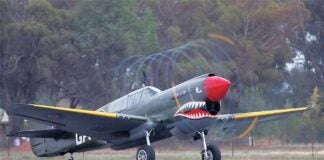Barnaby Wainfan
Thrust Line Effects
The propeller of an airplane generates thrust that drives it through the air. In addition to propelling the airplane, the thrust of the propeller...
Propeller Effects–Lateral Directional
The propeller slipstream affects the aerodynamics of the airplane. A propeller accelerates air backward and also imparts a swirl. The air in the slipstream...
Design Process: Slipstream Effects
In preliminary design and for performance calculations, we treat the engine, propeller and airframe as separate entities. The only engine effect we typically consider...
Design Process: Engine Size
The engine of an airplane must produce enough power to meet the requirements of all phases of the mission.
First, the engine must accelerate the...
Design Process: Strakes and Ventral Fins
On some airplanes, the basic empennage does not provide acceptable flying qualities in all flight regimes. Supplemental surfaces to augment directional stability, improve high...
H-tails and Triple Tails
The majority of airplanes use the conventional tail configuration with a single, centrally mounted vertical tail and rudder. Sometimes, however, the vertical tail is...
Design Process: T-Tails
A T-tail is a configuration where the horizontal tail is mounted on top of the vertical tail rather than directly to the fuselage. T-tails...
Design Process: V-Tails
A V-tail is a configuration where the horizontal stabilizer and vertical fin are replaced by a pair of surfaces mounted at a high dihedral...
Design Process: Vertical Tail Spin Considerations
Not every airplane is designed to perform intentional spins, but that doesn’t mean the designer can safely ignore the effect of the vertical tail...
Design Evolution on Display
In the antique/classics parking at AirVenture this year we found a replica of Benny Howard's Mr. Mulligan parked between a pair of Howard DGA-15s....














